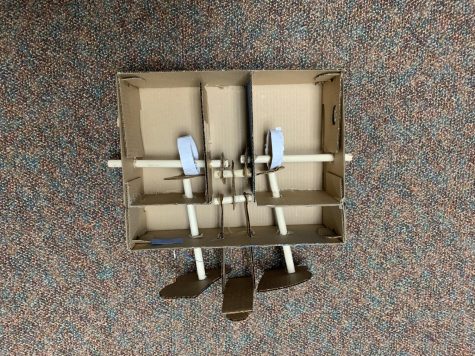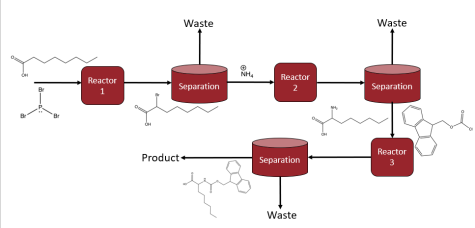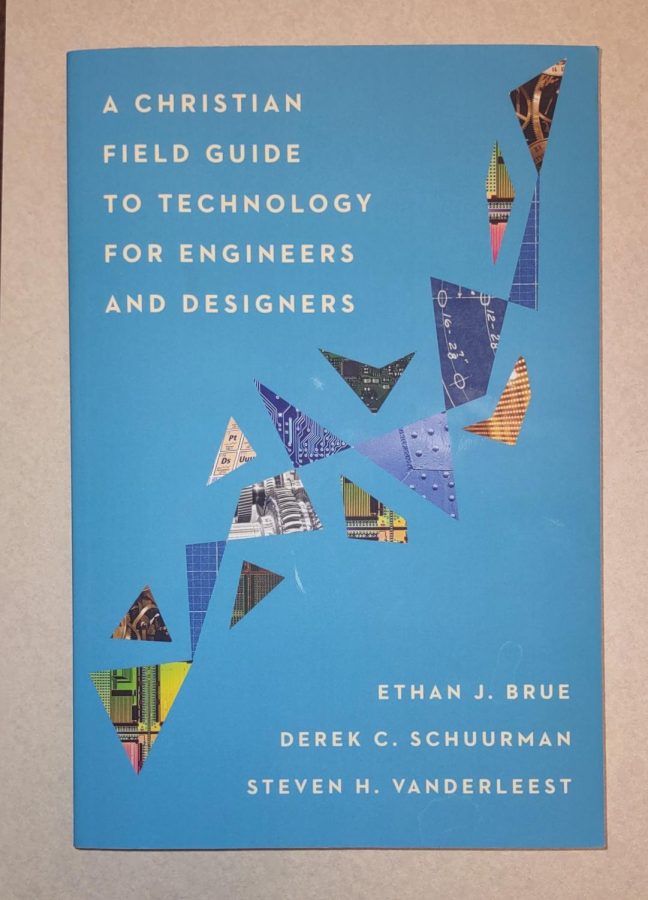Design norms aim to shape students into thinking Christian engineers
This book was written to help Christians “live a life consistent with their faith as they engage with technology.”
Part of what makes Calvin engineering unique are the program’s design norms — principles that are meant to guide the engineering design process. Students and professors agree that these norms help to shape them into a thinking Christian engineer, and students feel the norms could be emphasized even more throughout Calvin’s curriculum.
The norms
The seven engineering design norms –– caring, trust, openness, communication, delightful harmony, honesty and cultural appropriateness –– were first introduced in “Responsible Technology” edited by Stephen Monsma, a former Calvin professor. Monsma applied Dutch philosopher Herman Dooyeweerd’s Christian Concepts to technology and engineering, according to Gayle Ermer, chair of the engineering department.
Mark Michmerhuizen, electrical engineering professor and class of 1989, said that these design norms were introduced around the time that he was at Calvin. While they did not influence his thinking “as much as it should have” at the time, he realized later just how important design norms are to being a Christian engineer.
Design norms in class
Electrical engineering professor Monica Groenenboom, who teaches two sections of ENGR 101, introduces design norms as part of projects and assignments to demonstrate what it looks like to be a “thinking engineer.”
Isaac Schaafsma, a first-year chemical engineering student, said the overarching theme of the seven design norms is “making sure when you’re making your product, it promotes wellness for everybody who is involved with it –– the people working on it, the people who buy it and then also for the environment as well.”

Isaac Timmer, a senior chemical engineering student, said that though the term design norms was new to him, he had grown up being taught to “live out his faith,” and appreciates how the design norms guide him in doing that in his field.
As an example, Timmer said he thinks of a ENGR 101 report he did on the design of e-cigarettes. In terms of design “they are incredible. They’re compact, they’re relatively energy efficient and they look good. They fit just about every design norm, except for caring for other people.” In the set of norms Calvin teaches, that failure is a flaw in the whole design.
Curricular gaps
For their senior design project, all senior engineering students take ENGR 339. According to Michmerhuizen, this class discusses ethics, design norms and professional development topics.
However, between the time that design norms are introduced in 101 until senior design, they are hardly mentioned in the sophomore and junior classes. Michmerhuizen said that design norms are emphasized most in ENGR 101 and 339 because these are the classes “where we look at design in a more abstract way. 101 is kind of like, ‘Okay, so you want to be an engineer,’ … and then 339 is [about] how do you apply [your technical knowledge] to a design project?”

Timmer said that the design norms can feel “forced” because they are bookended at the end of Calvin’s curriculum. Though engineering ethics and safety was mentioned in a couple of his classes, he said that the reason design norms might not be integrated into the curriculum is because classes “are so technically heavy your sophomore and junior years.”
Samuel Stonehouse, who graduated in 2022 with a degree in mechanical engineering, said the design norms can sometimes seem like a “checklist” to be marked off at the end of the design process. Instead, he suggests that they should be part of senior design from the beginning and throughout the process.
“I think it’s [a] serious problem with the engineering curriculum because there is actually an important role for us as Christian engineers to learn how to use our faith and integrate it into our engineering,” Stonehouse said.
According to Stonehouse, the limited class time dedicated to design norms meant he didn’t get to delve into much nuance. “We’re not taught what happens when design norms conflict; if something is not caring but it’s cheaper, … how do we deal with that?” Stonehouse said.
The goal of the norms, according to Michmerhuizen, isn’t to answer every question that students might face as Christian engineers. “Just as giving someone a full toolbox and a few hundred hours of instruction doesn’t make them a carpenter, neither can a framework and a number of projects produce a mature Christian engineer,” Michmerhuizen said. “We attempt to provide framework and work through its application on a specific project in senior design.”
Groenenboom agreed with Michmerhuizen. “It is our objective as you are at Calvin to help you build ‘a toolbox’ so when you graduate, you have a good starter kit. We constantly challenge you to think critically, not just follow a process blindly. This is where the design norms are helpful. … These are tools to engage with others when the time comes to make things better, an added value of the Christian, liberal arts education.”
Design norms in industry
While design norms can seem abstract, Michmerhuizen said that “A Christian Field Guide for Technology for Engineers and Designers” offers some clear insights and examples of what it looks like to design well and act ethically. The book, published in April 2022 by Dordt professor Ethan Brue, Calvin computer science professor Derek Schuurman and former Calvin engineering professor Steven Vanderleest, was written to help Christians “live a life consistent with their faith as they engage with technology.”
Groenenboom said “some of [the design norms] are kind of natural to design and then some of them you have to be more deliberate about thinking about them.” For example, the cultural appropriateness design norm comes into play when transporting goods in a truck compared to transporting on a motorcycle over bumpy roads. “How can we design so that [the] product [transported by motorcycle], when somebody opens it, [looks] just as good as the one that was [transported by truck]?”
Groenenboom said that considerations like the design norms should guide how an engineer designs a product. For example, an engineer must “plan for [foreseeable misuse], test for it and make decisions on how you may have some safeguards around what you do.”
Being a Christian Engineer
While the design norms are not only applicable to Christian engineers, Ermer said that they “come from a holistic Christian understanding of our role as redemptive agents in the world and our understanding that technology impacts people in a variety of ways.”
Michmerhuizen said that Calvin’s unique attention to design norms in engineering is important, because they help to guide future ethical decisions. Compared to his time at Calvin, he said that ethical considerations were hardly brought up as he pursued further education at the University of Michigan and Grand Valley State University.
The design norms continue to shape how Michmerhuizen thinks about his work. He said they have made him consider the questions “who do you give credit to and who are you serving through your work?”







